Tele-ICU - Expanding the reach of acute care
Intensive Care Units (ICUs) are facing increasing challenges. More patients have chronic conditions that require monitoring around the clock, such as cancer and coronary heart disorders. An aging population is contributing to the need for additional critical care beds, stressing resources. There is a shortage of critical care specialist and adequate level of care, particularly in remote regions and secondary hospitals. Such challenges has been amplified during pandemic like COVID-19. IntelliSpace Consultative Critical Care (ICCC) allows the establishment of Tele-ICU facilities with remote monitoring and consultation to support high-quality patient care.
What is Tele-ICU
What is tele-ICU? In its simplest form, a tele-ICU enables off-site clinicians to interact with bedside staff to consult on patient care. One centralized care team can manage a large number of geographically dispersed ICU locations to exchange health information electronically, in real time. A tele-ICU, is a supplement – not a replacement – to the bedside team, offering support to increasingly scarce clinical resources. How Tele-ICU works: Tele-ICU programs concentrate clinical resources in remote care centers (a central monitoring facility) and extends those resources to the bedside via technology, independent of the care center or hospital’s location. Using A/V conferencing and a real-time data-stream of patient information from multiple interfaces, a physician working from a care center in New York City can rapidly care for a patient in Seattle, day or night. This connectivity enables an already engaged intensivist to promptly intervene and consistently provide care aligned with best-practices. What is the value of a tele-ICU investment? Download our whitepaper on demonstrated operational, financial and clinical ROI.
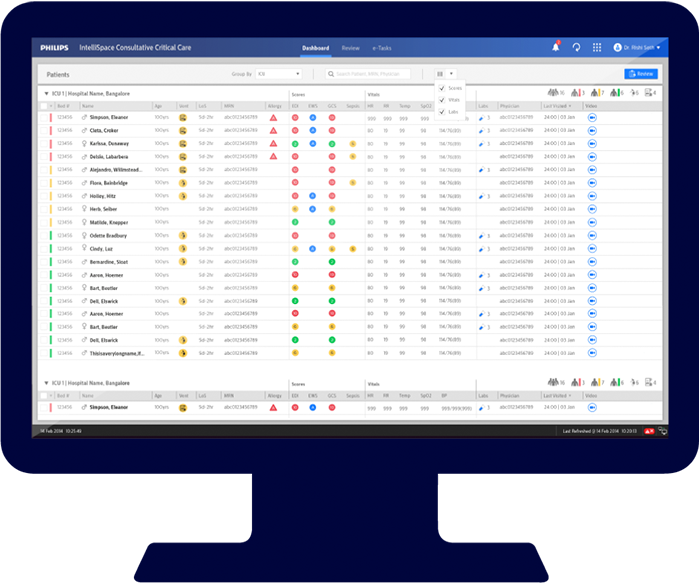
Integrated dashboard for census management
ICCC software features an integrated dashboard:
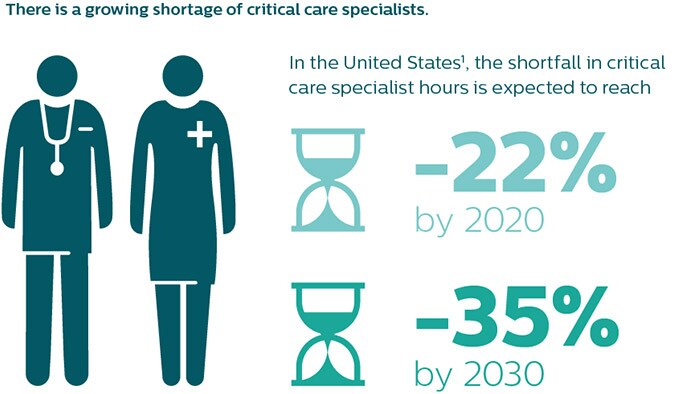
Expanding the reach of care
The tele-ICU staff continuously monitors patients in multiple, geographically distributed ICUs, supporting local clinicians by providing additional patient oversight, clinical collaboration. 1. Angus DC, Kelley MA, et al. Committee on Manpower for Pulmonary and Critical Care Societies (COMPACCS). Caring for the critically ill patient. Current and projected workforce requirements for care of the critically ill and patients with pulmonary disease: can we meet the requirements of an aging population? JAMA. 2000 Dec 6;284(21):2762-70.
ICCC provides remote monitoring support in the critical care environment through its ability to integrate, aggregate, and present meaningful clinical data.
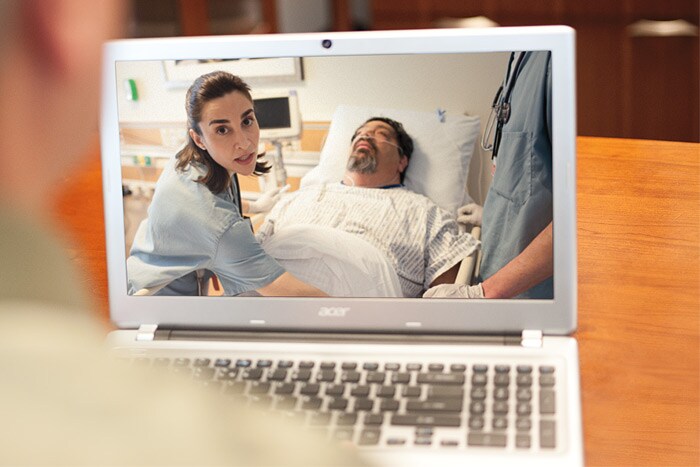
Interdisciplinary collaboration regardless of location
An extra set of eyes on patient status data. Proactive notification and escalation when that data indicates a concern. Particularly when census is high, or in the evenings or on weekends when there may be fewer on-site staff, the tele-ICU center provides an expanded care team and peace of mind. Tele-ICU enables:
The ICCC Solution
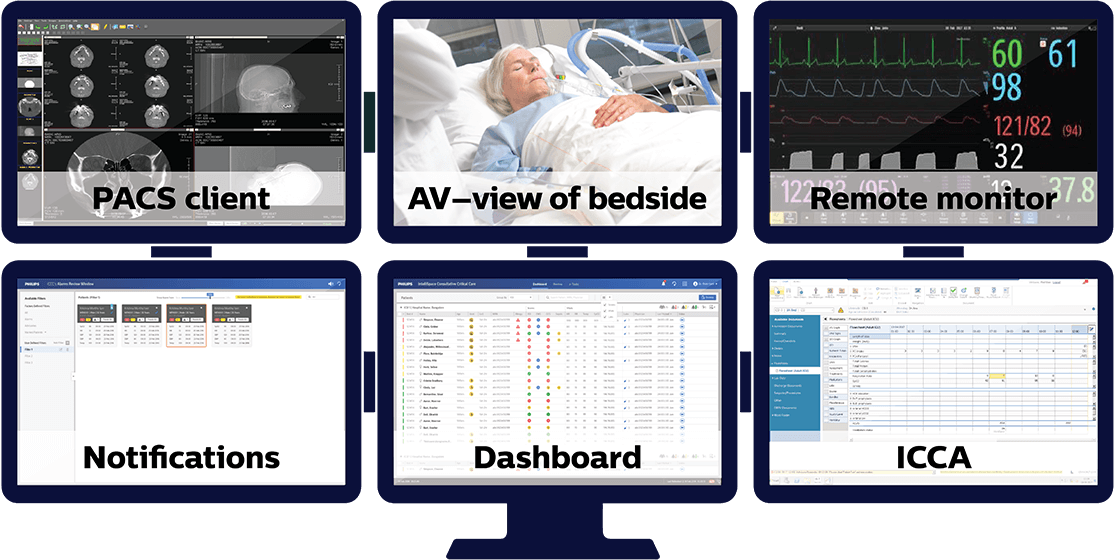
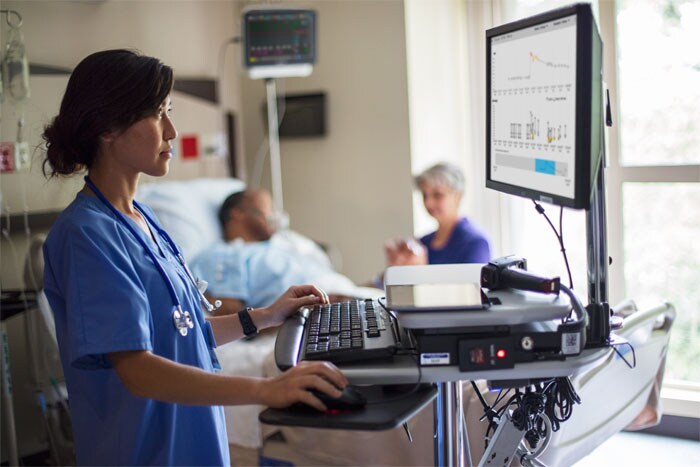
Clinicians at the tele-ICU center have access to the same patient data that is available at the bedside, including vital signs data and waveforms. In addition, they can view data from CIS or EMR, including patient history, lab results, admissions information, and medication orders. Tele-ICU centers bring expertise from where it is available to where it is needed, allowing patients to remain in familiar surroundings while still having full access to an interdisciplinary team of experts.
Calculating the value
Calculating the value: Users are finding that tele-ICU not only serves a critical role in the effective regional management of ICUs, but positively impacts the healthcare system as a whole. Having a centralized remote patient monitoring center provides the ability to consolidate and standardize care, reduce transfers while maximizing bed utilization, and support onsite staff. This reduces costs while enhancing revenues, patient flow, and capacity management across the system.
The future of patient care is now
The future of patient care is now: The demand for acute care is expected to grow, driven by an aging population and a rise in chronic conditions and co-morbidities. This demand is accompanied by several challenges as healthcare systems struggle with the reduced availability of expert clinicians, financial constraints, and lack of standardization in many areas of care.

